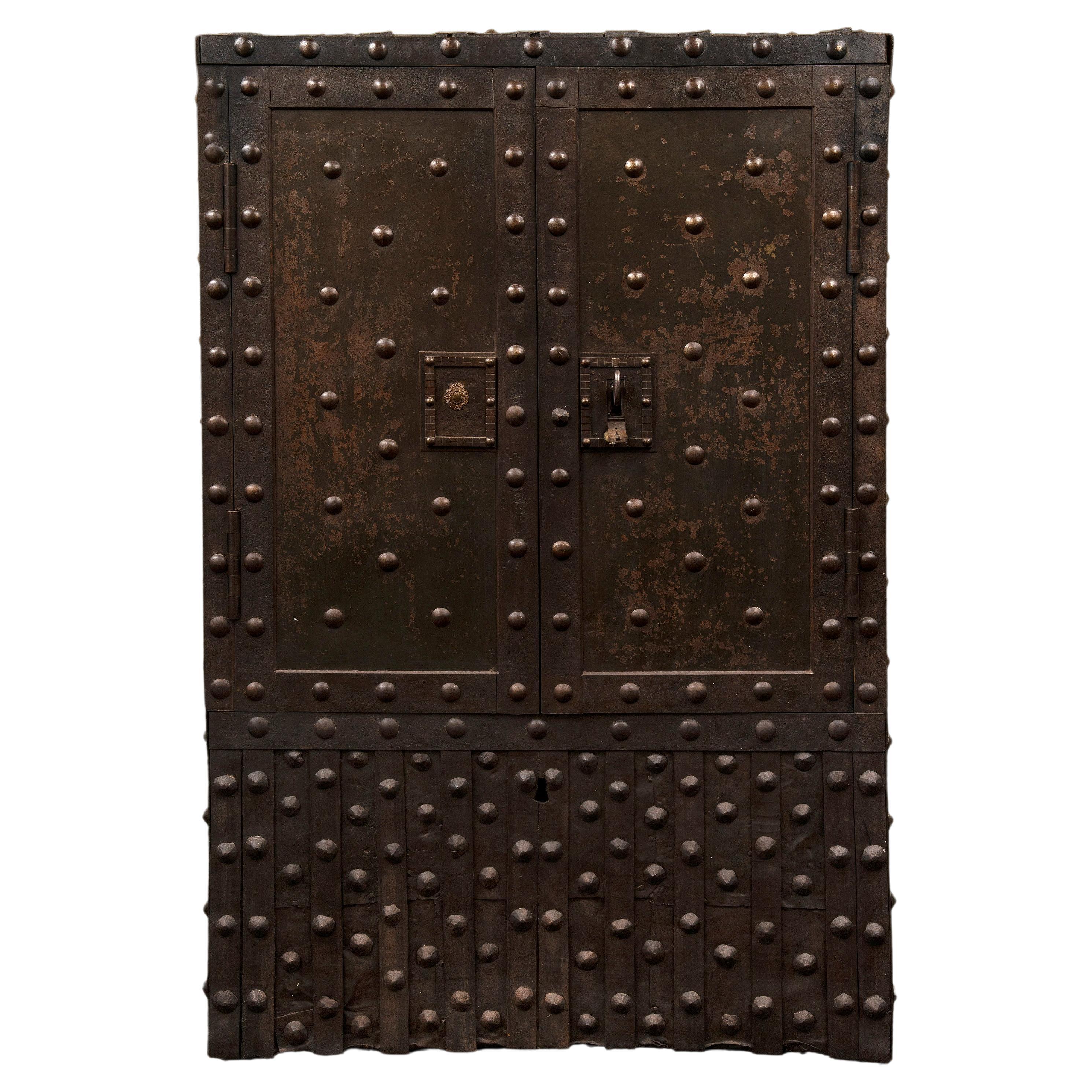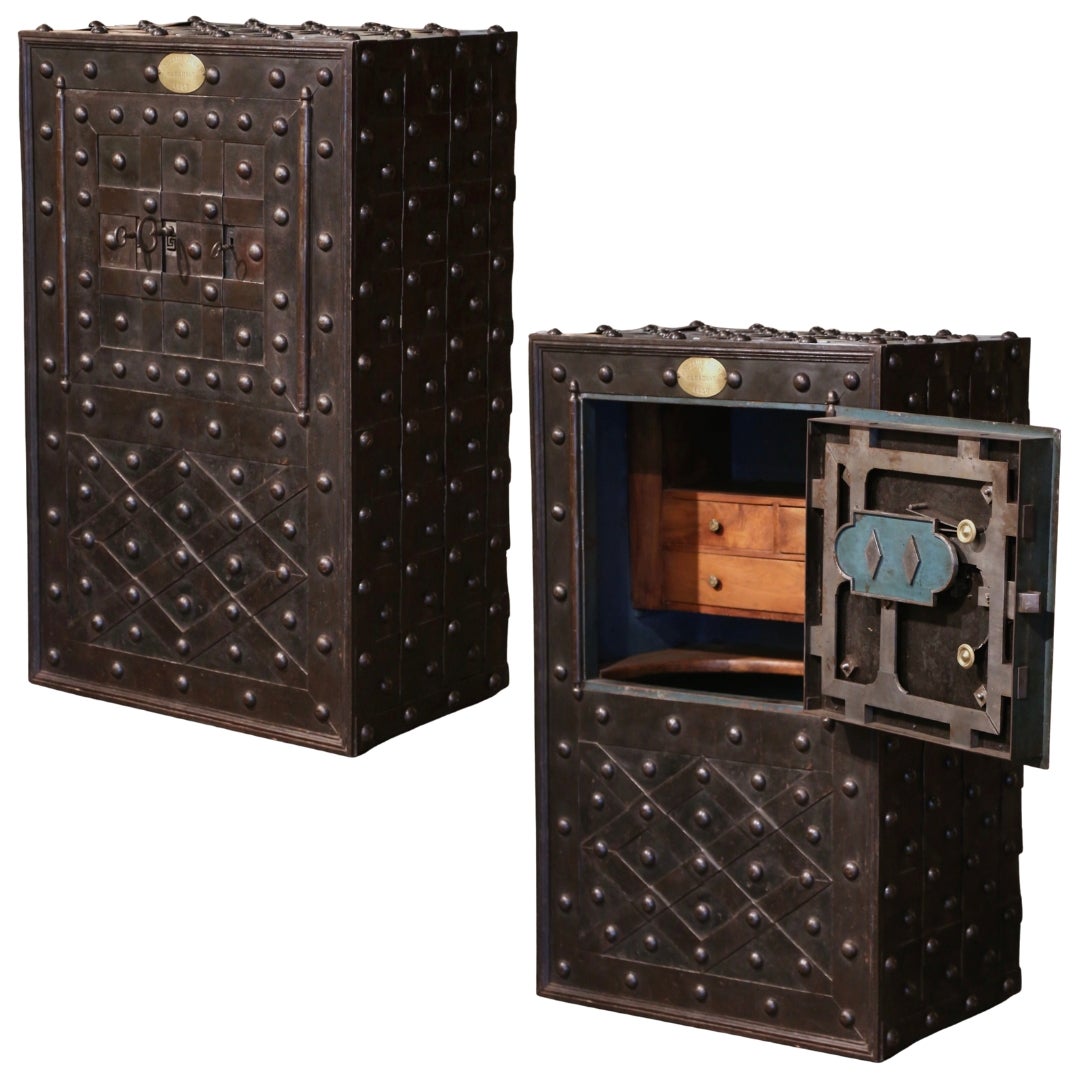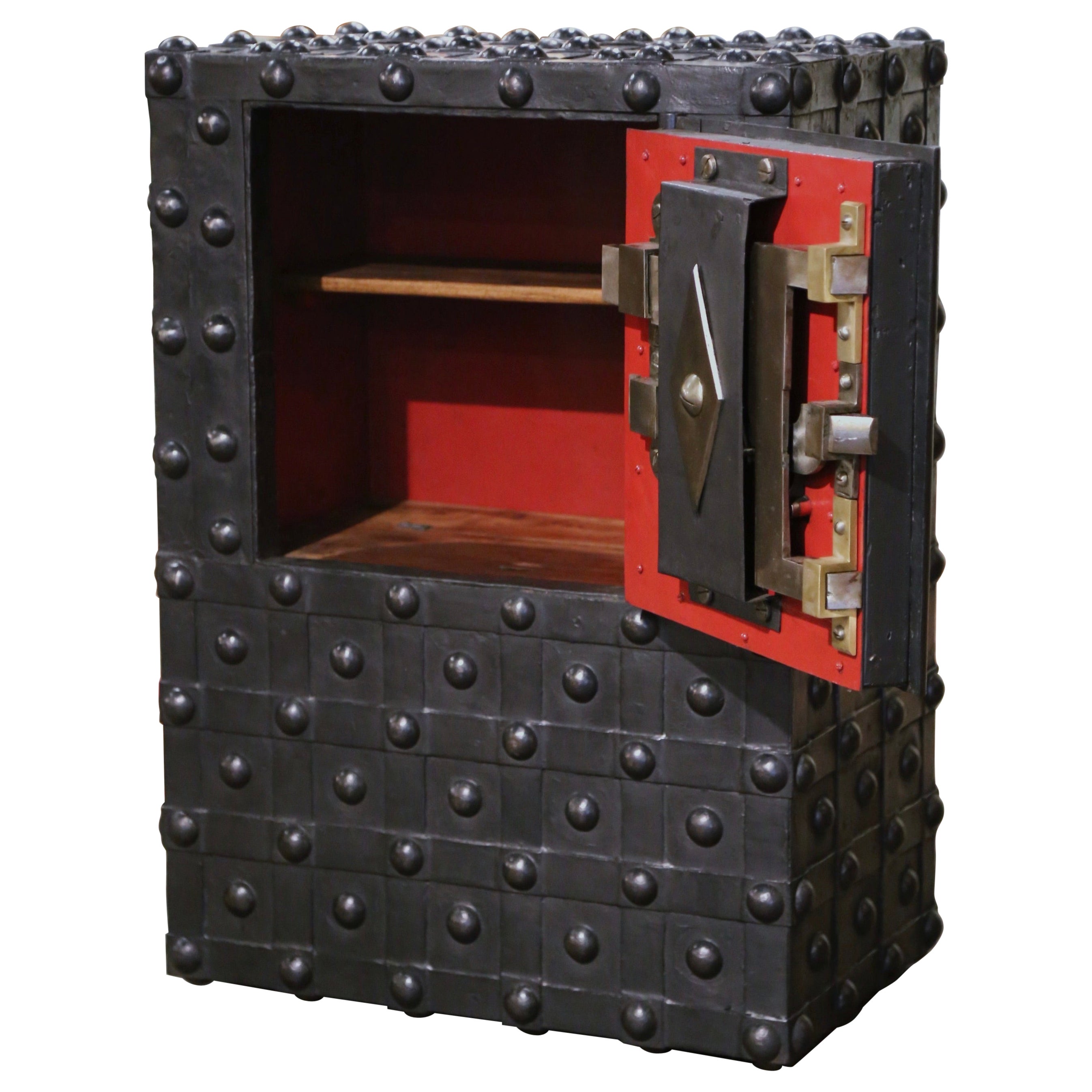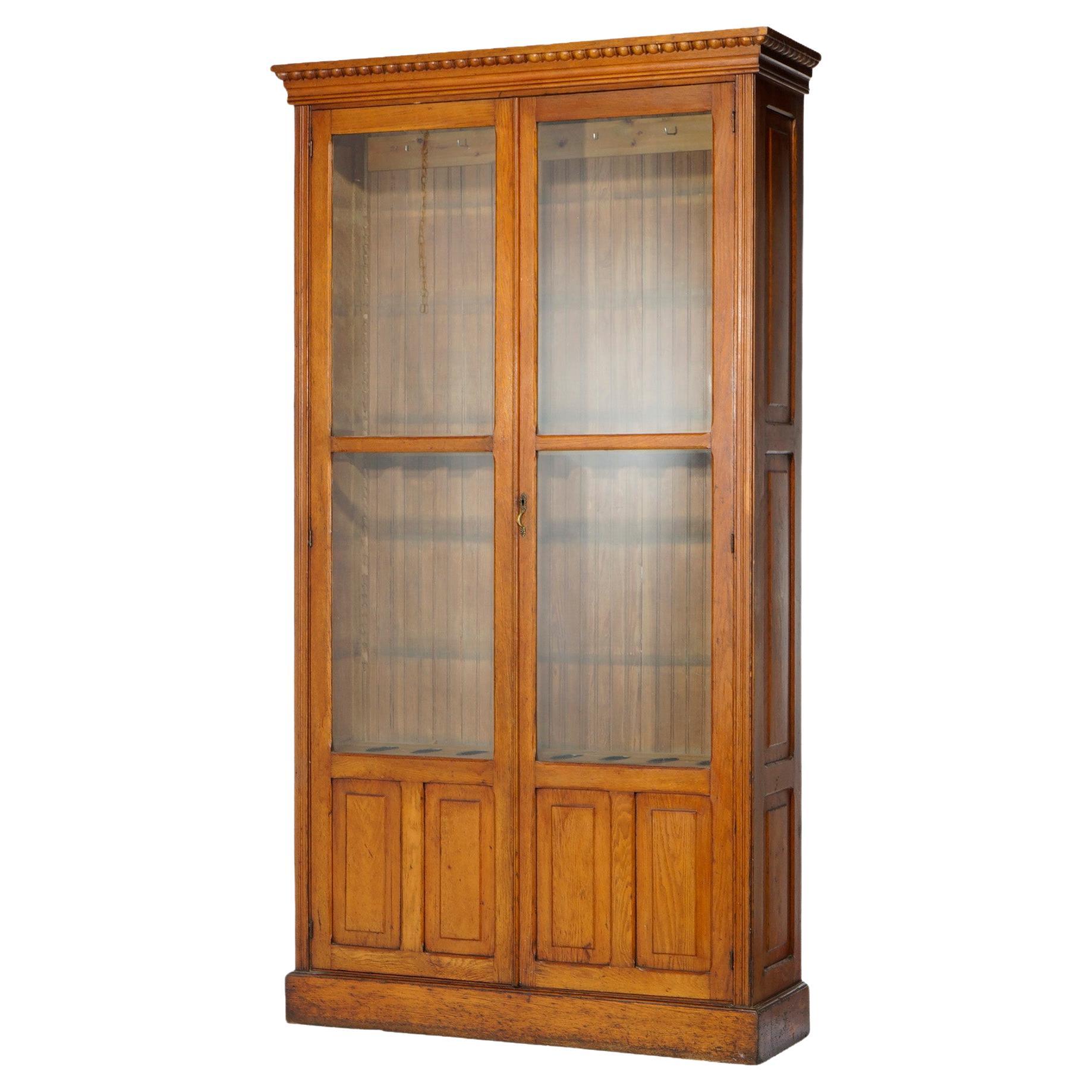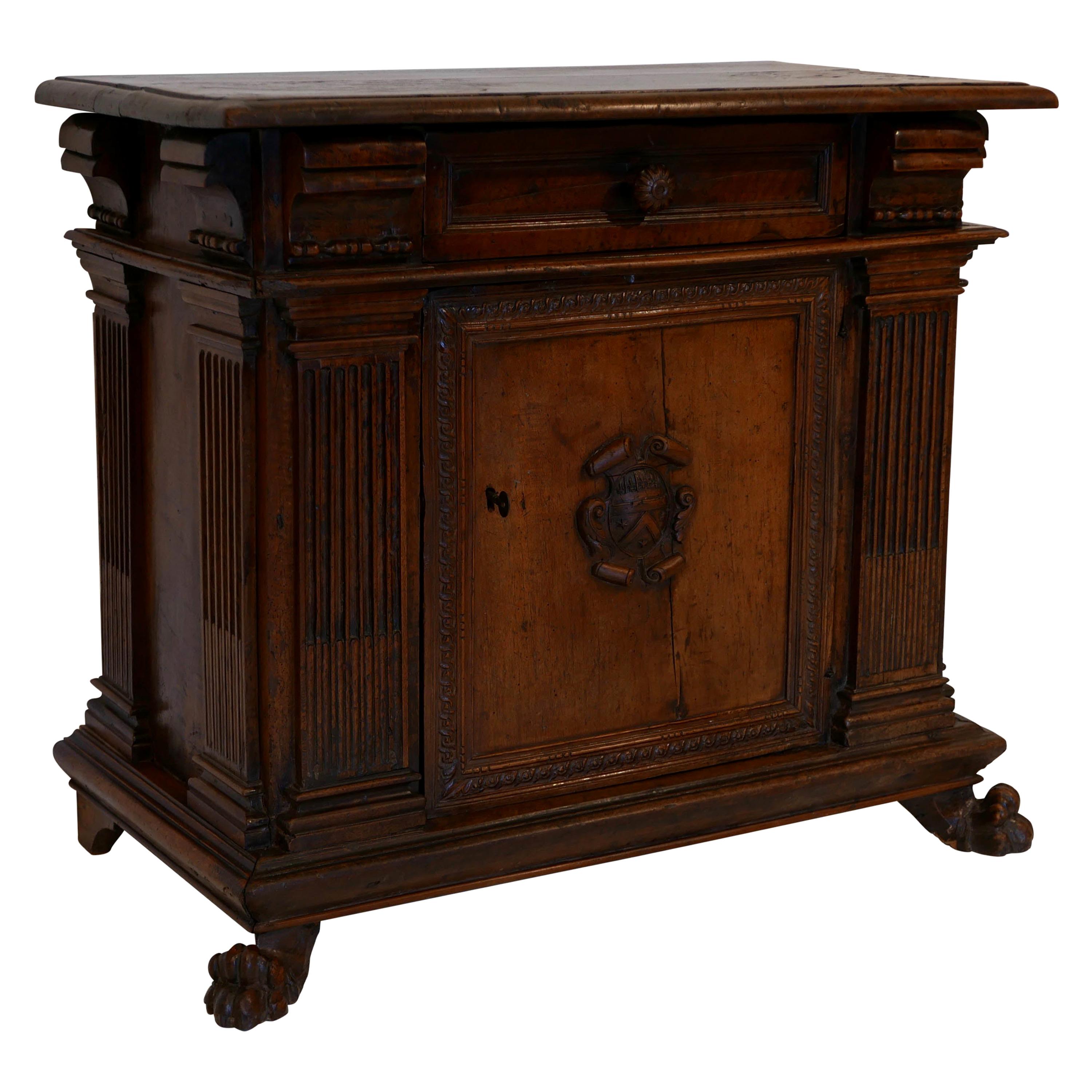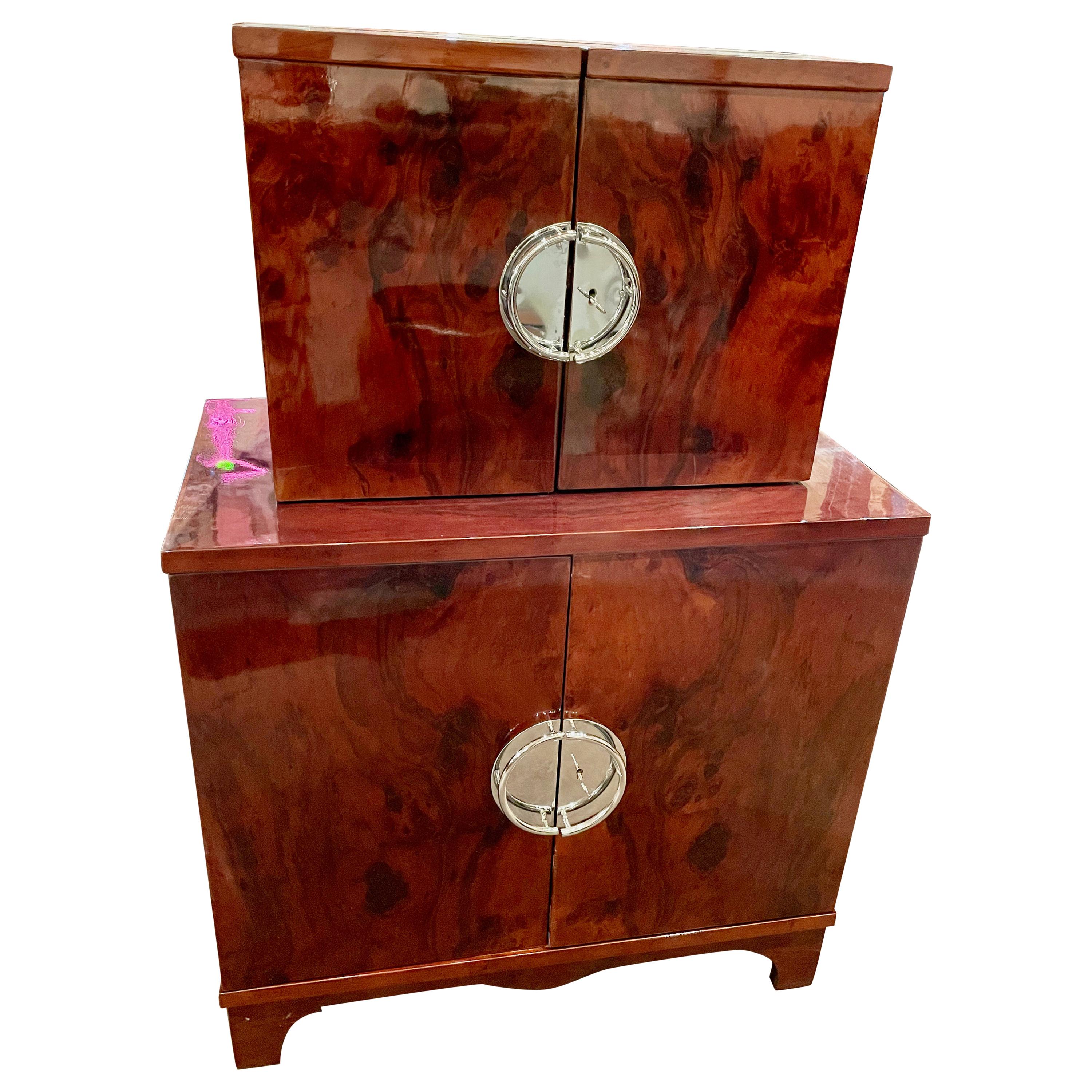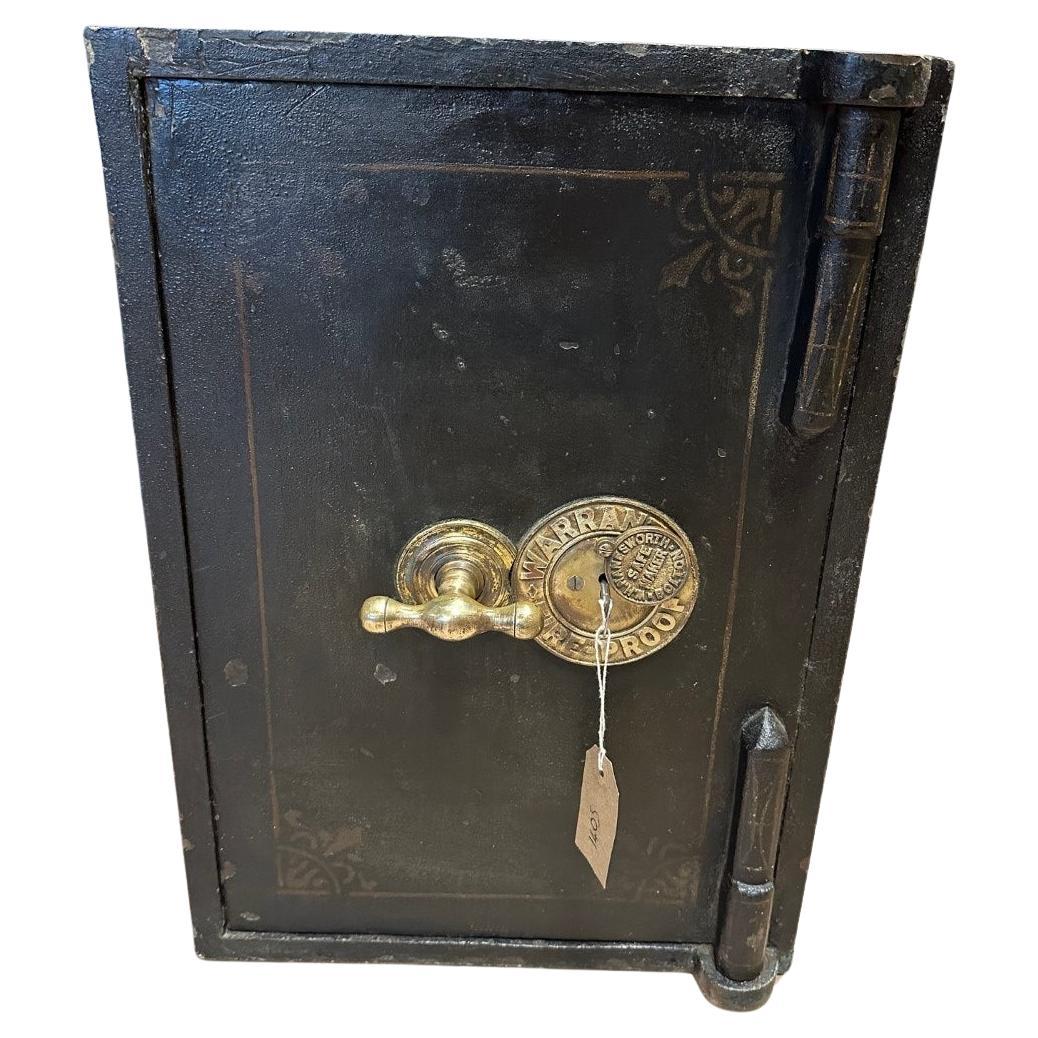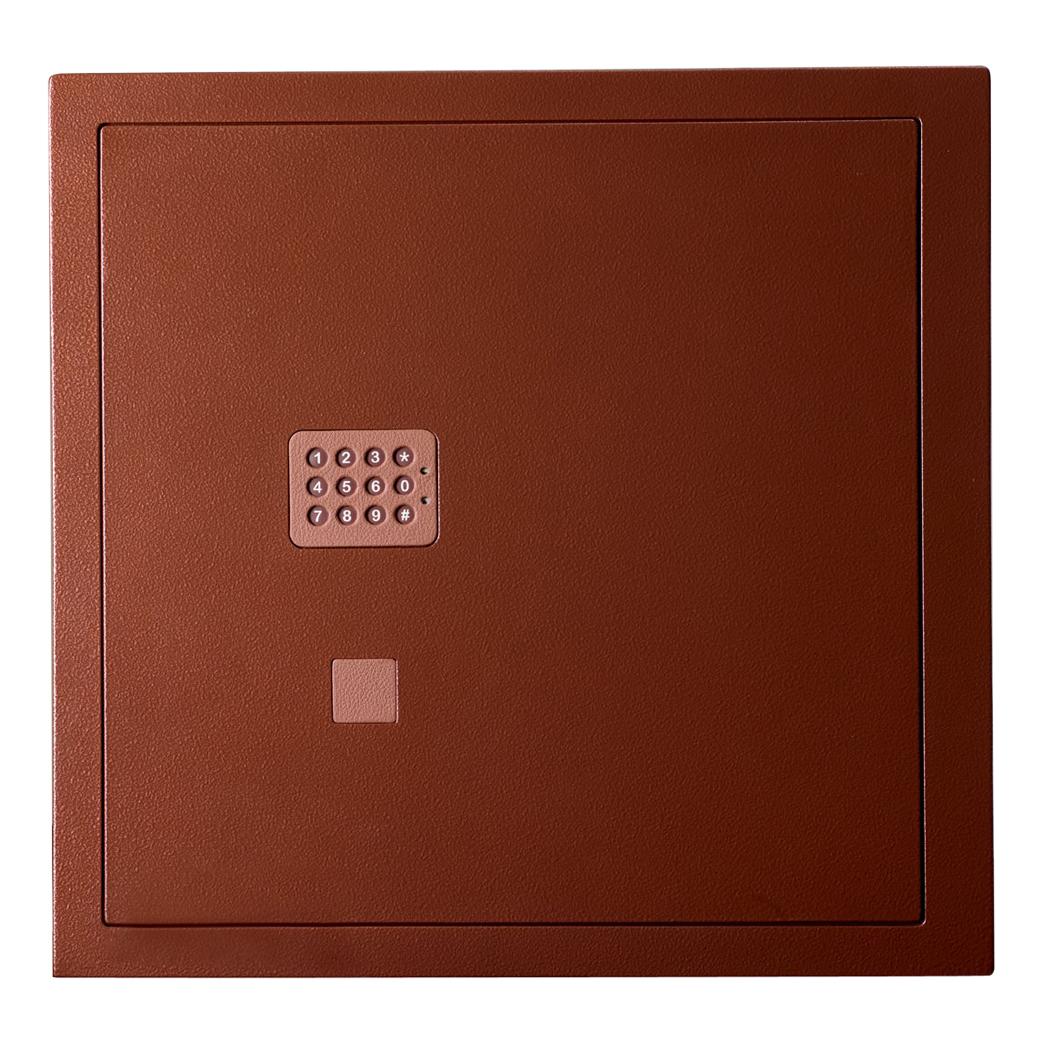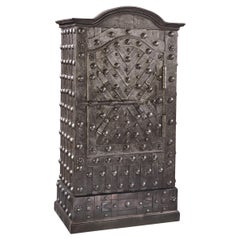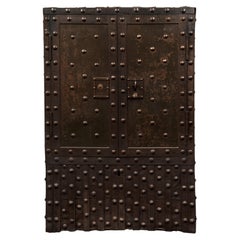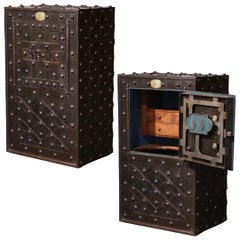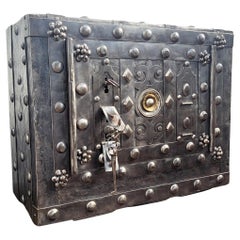
Venetian Double-Door Hobnail Safe, Circa 1680
View Similar Items
Want more images or videos?
Request additional images or videos from the seller
1 of 8
Venetian Double-Door Hobnail Safe, Circa 1680
About the Item
- Dimensions:Height: 83.5 in (212.09 cm)Width: 46.75 in (118.75 cm)Depth: 25.75 in (65.41 cm)
- Style:Other (In the Style Of)
- Materials and Techniques:
- Period:
- Date of Manufacture:Circa 1680
- Condition:
- Seller Location:New Orleans, LA
- Reference Number:Seller: 31-59431stDibs: LU891136109422
About the Seller
5.0
Recognized Seller
These prestigious sellers are industry leaders and represent the highest echelon for item quality and design.
Established in 1912
1stDibs seller since 2010
93 sales on 1stDibs
Typical response time: 6 hours
More From This SellerView All
- Italian Baroque Iron SafeLocated in New Orleans, LAVisually imposing and mechanically complex, this formidable Italian Baroque safe would have provided unparalleled security for storing valuables in the 18th century. The hobnail motifs covering the safe are a testament to the fine artistry and craftsmanship of Piedmont metalworkers of this time. Beautifully restored and fully functional, this iron safe...Category
Antique 18th Century Italian Baroque Cabinets
MaterialsIron
$124,500 - 18th Century Italian Iron Floor SafeLocated in New Orleans, LAThis rare and imposing 18th-century safe hails from the Turin region of northwestern Italy, and is crafted of reinforced wrought iron designed to be virtually indestructible. Impenet...Category
Antique 18th Century Italian Cabinets
MaterialsIron, Wrought Iron
- French Provincial Double Door ArmoireLocated in New Orleans, LAThis majestic French walnut armoire is a stunning example of the Provincial style. Standing nearly nine feet high, this rare armoire featuring splendid rocaille carvings above its do...Category
Antique 18th Century French French Provincial Wardrobes and Armoires
MaterialsWood, Walnut
- 19th Century Dutch Bureau BookcaseLocated in New Orleans, LAThis magnificent and important Dutch mahogany bureau bookcase, exuberantly carved and adorned with superb figural carvings, impressive scrolled feet and elaborate applied decoration....Category
Antique 19th Century Dutch Other Bookcases
MaterialsMahogany
- Venetian Wood SculptureLocated in New Orleans, LAAn exceptional and monumental Venetian wood sculpture surmounted by two putti holding a footed tray. The base is decorated with a bas-relief of the view ...Category
Antique 19th Century Italian Other Figurative Sculptures
MaterialsWood
$14,500 - King George I Ambassadorial Secrétaire-CabinetLocated in New Orleans, LAThis highly important secrétaire-cabinet was crafted for and specially ordered by King George I for the British Ambassador to Russia. From its craftsmanship and materials to its exceptional artistry, it is a work of royal and historic significance that exudes power in each and every detail. The broken pediment at its apex features the simplified royal coat of arms bearing the king’s crown, while the interior is adorned by portraits of the British Royal Family. Placed within the ambassador’s St. Petersburg home, this entirely unique piece of furniture would have been a potent reminder of England's grandeur and political importance. Relations between England and Russia during this period were at an all-time high. Peter the Great had traveled to England in 1698 as part of his widely known “Grand Embassy” tour, wherein he attempted to gain foreign support against the Ottoman Empire. He spent a period of nearly four months there, meeting with King William III and his court on numerous occasions. Noted academic Arthur MacGregor wrote concerning the impact of the trip, “For two decades following Peter's visit, British influence in Russia reached a peak. It manifested itself in social custom, in craft practice and in ships and naval organization... it reached a significant sector of the population before relations cooled once again and the two nations pulled back from this era of unprecedented cordiality.” First and foremost, however, it is a reminder of British might and influence. By the reign of King George I, England had come into its own as a world power. Unique in its design, this cabinet is a reflection of the country’s might. It is crafted from the highest-quality solid walnut and burr walnut adorned by gilded lock plates and engraved hinges. The presence of ormolu at its apex and lining the doors was a rarity for this period, and its addition makes manifest the importance of the design. The outer doors open to reveal multiple interiors, including fifteen separate drawers around a central cupboard; the cupboard doors each bear mezzotint portraits of George I and his father, Ernest Augustus, Elector of Hanover. An etching after the portrait of George I dating to circa 1716 is in London’s Royal Academy. A second, inner pair of doors are adorned by mezzotints of the Prince and Princess of Wales (later Queen Caroline and George II), which are both after portraits by Sir Godfrey Kneller dated 1716 in the Royal Collection. A final portrait is revealed on the very interior of the cabinet, where a mezzotint of Frederick, Anne, Amelia and Caroline, children of the Prince of Wales, resides. An etching (circa 1715-1720) after this portrait can be found in the National Portrait Gallery (London). Apart from its abundance of royal portraiture, the cabinet features stunning painted decoration, including floral designs as well as clouds, birds and trees in a bucolic motif reminiscent of Eden. Its lower portion is a study in both form and function, featuring a fitted secrétaire-drawer above three additional drawers for storage. The cabinet appears in The Shorter Dictionary of English Furniture by R. Edwards from 1964, a text that is regarded as the bible of British furniture design. Edwards describes it as a “writing cabinet...given by George I to the British Ambassador at the Russian court.” The cabinet was likely made for the 18th-century German diplomat and writer Friedrich Christian Weber, who represented English interests at the Russian court from 1714 until 1719. Although Weber’s tenure as ambassador was relatively short, while in St. Petersburg, he authored his account entitled Das veraenderte Russland (The Present State of Russia), which was published in three volumes in 1721, 1739 and 1740. It may, however, also have been made for George Douglas, 2nd Earl of Dumbarton, who served as ambassador alongside Weber in 1716. Diplomatic relations ceased between the two countries in 1721. In 1928, the cabinet appeared for sale at the International Exhibition of Antiques & Works of Art in Olympia. It had previously been in the collection of the Woltner family of Bordeaux, the celebrated vintners who owned the estate Château Laville Haut-Brion and produced wine of the same name. According to the family, Monsieur Woltner was given the cabinet as a gift from an aunt who lived in Russia for many years. After leaving the Woltner collection, the cabinet was acquired by William Berry...Category
Antique 18th Century English Georgian Secretaires
MaterialsBrass
You May Also Like
- Double door safe - Italian, 18th CenturyLocated in Bruxelles, BECassa-forte Double door safe Italian, 18th Century Iron & Wood Height: 157 cm Width: 104 m Depth: 53 cmCategory
Antique 18th Century Italian Louis XVI Cabinets
MaterialsIron
- Early 19th Century French Wrought Iron Hobnail Studded Safe Dated 1838Located in Dallas, TXKeep your valuables and documents in this important antique hobnail safe. Manufactured by Magaud de Charf in Clermont, France, the monumental wrought iron safe is decorated with nail head motifs on all four sides and has an all-original, working mechanism. The front door is further decorated with two large hinges on the sides, and further embellished with a bronze plaque on the top which reads: "Doumaux Jeune a Clermont 1838". The inside opens to reveal an amazing lock mechanism and a large storage compartment. To open the safe, you first need to find and locate the nail which will activate and open the key latch on the right. Next, place the two large keys in each key hole one at a time and turn them in a certain order to open the safe; when opened, the inside reveals three wooden drawers over a bottom shelf which lifts up for underneath storage. (A video will be sent to the buyer if needed). The large and heavy hobnail studded safe...Category
Antique Mid-19th Century French Gothic Cabinets
MaterialsWrought Iron
- 18th Century Wrought Iron Italian Antique Hobnail Safe Strong Box Bar CabinetLocated in Carimate, ComoBeautiful and rare example of late 18th century Italian master blacksmith craftsmanship, this antique studded safe with typical all-around hobnails and great wrought iron details, is...Category
Antique Late 18th Century Italian Baroque Cabinets
MaterialsMetal, Wrought Iron
- Mid-19th Century French Wrought Iron Hobnail Studded Safe by Magaud De CharfLocated in Dallas, TXKeep your valuables and important documents in this large antique hobnail safe. Manufactured by Magaud de Charf in Marseilles, France circa 1870, the wrought iron safe...Category
Antique Mid-19th Century French Gothic Cabinets
MaterialsWrought Iron
- Antique Horner School Oak Double Door Gun Cabinet Circa 1900Located in Big Flats, NYAn antique gun cabinet in the manner of Horner offers paneled oak construction with double glass doors over blind door storage area, c1900 Measu...Category
Early 20th Century American Cabinets
MaterialsOak
$2,600 Sale Price20% Off - 17th Century Tuscan Walnut Cabinet, Italian, circa 1680Located in San Francisco, CAOriginal walnut cabinet credenza with three drawers above the cabinet with stop fluted pilasters standing on four lion paw feet. The feet on this cabinet maybe older replacements. T...Category
Antique Late 17th Century Italian Cabinets
MaterialsWalnut
Recently Viewed
View AllMore Ways To Browse
Cases Only
Signed Francois Linke
Vintage Card Storage
Mid Century Modern Sewing Cabinet
Neoclassical Curio
Axel Hjorth Dresser
Old Hickory Furniture Hutch
Thomasville Wall Unit
Lower Cabinet
Walnut Cabinet With Black
Mahogany French Doors
Anton Leiden
Heywood Wakefield Tambour Cabinet
1930s 4 Door Glass Kitchen Cabinets
Henredon Scene Three Cabinet
Fernando Laposse
Wood Pieces
Corner Entertainment Cabinet
